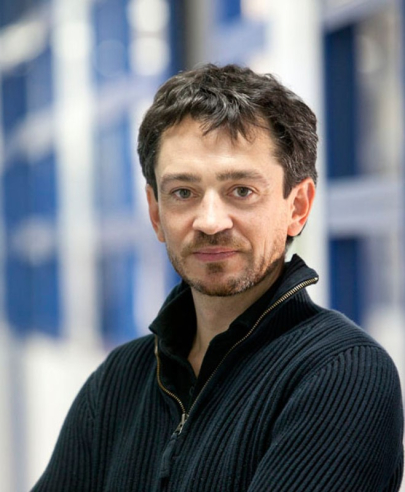Stephane NedelecInstitut du fer à moulin - Inserm / Sorbonne Universités
Comprendre la formation du système nerveux humain en utilisant des modèles in vitro dérivés des cellules souches
Mes recherches
I am developing in vitro models of human nervous system development including organoids and embryoids to decode the mechanisms controlling the formation of neuronal diversity and how perturbations in these processes can lead to diseases. Following my PhD at the Ecole Normale Supérieure (Paris) under the supervision of Alain Trembleau and Alain Prochiantz, I undertook postdoctoral training in the lab of Hynek Wichterle at Columbia University (New York). I then joined the group of Cécile Martinat at Istem in Evry, where I was hired as Charge de recherché Inserm in 2015. Following my recruitment in the ATIP-Avenir program and a grant from the Labex Bio-Psy, I started my team “Stem cells and Neurodevelopment” at the Institut du Fer à Moulin in Paris in July 2016. Here, we mostly work with human pluripotent stem cells (iPS cells) that have the potential to give rise to all cell types of the organism. As the post-implantation development of human embryos cannot be studied, we use the potential of iPS cells to develop complex in vitro structures (spheroids, embryoids and organoids) to unravel the principles that underlie the development of specific neuronal populations or neural tissues. Using iPS cells derived from patients suffering from rare diseases, we study the pathways that lead to the impairment or degeneration of specific cell types. We currently focus on the mechanisms underlying the vulnerability of spinal motor neurons in rare neurodevelopmental disorders called spinal muscular atrophies. In all these projects, we use live and high-throughput imaging techniques coupled to automated image analysis, functional genomic and microfluidic approaches. The group is currently funded by the ATIP-Avenir program, grants of the Bio-Psy Labex, AFM-Telethon, Foundation Maladies Rares, Agence National de la Recherche.
Mon projet ATIP-Avenir
Stem cell approaches of human motor neuron diversity in development and diseases ?
In the nervous system, the generation of thousand distinct types of neurons underlies the formation of neural circuits encoding behaviors. Functional impairment or degeneration of discrete neuronal populations leads to the symptoms characterizing individual neurological disorders. However, neurodegenerative diseases are often caused by mutations in ubiquitously expressed proteins. The basis of the differential sensitivity of neuronal subtypes is currently unknown but holds clear therapeutic promises. Thus, a major challenge in Neurosciences is to understand how neuronal subtypes are specified during development, acquire and maintain distinct properties and how diseases challenge subtype specific features. This is well illustrated in motor neuron (MN) disorders that target muscle-innervating neurons located in the hindbrain and spinal cord. This group of diseases is symptomatically heterogeneous due to the selective degeneration of specific MN subtypes in each disease while other MNs are spared. Relying on our expertise to control the differentiation of mouse and human pluripotent stem cells (PSC) including patient specific induced PSCs in different types of neurons including MNs, our team is using systematic and quantitative approaches to study the molecular control of neuronal diversification in the human spinal cord; 1) how the iterative use of a small number of patterning molecules interacts to specify MN diversity and 2) how signals derived from muscle refine MN subtype properties ; 3) to decipher how subtype specific features underlie the differential sensitivity of selective MN groups in different forms of Spinal Muscular Atrophies (SMAs), a group of neurodevelopmental MN diseases. With this project, we hope to unravel rules controlling spinal circuit formation, reinforce the use of PSC differentiation for basic and translational studies, and improve our understanding of the basis of MN diseases to help revealing new therapeutic avenues.
